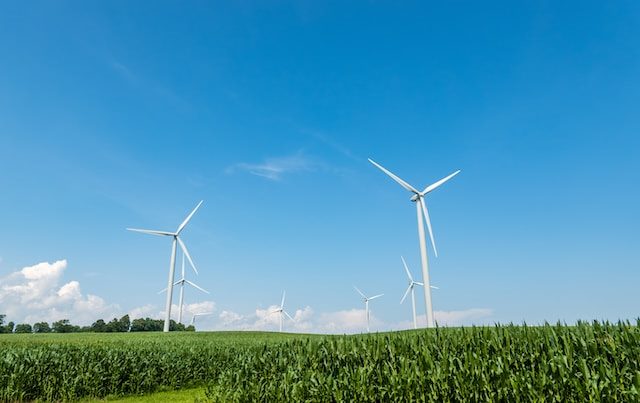
Wind energy is a sustainable and renewable source of power that has gained popularity in recent years. It is a clean alternative to fossil fuels and can significantly reduce our carbon footprint. Two common types of wind turbines used for harnessing wind energy are vertical turbines and traditional wind turbines. In this article, we will explore the differences between these two types and their benefits.
Vertical Turbines
A vertical turbine, also known as a vertical-axis wind turbine (VAWT), is a type of wind turbine that has its rotor shaft placed vertically. Unlike traditional wind turbines that have blades rotating around a horizontal axis, vertical turbines have blades that rotate around a vertical axis.
Advantages of Vertical Turbines
- Less affected by wind direction: Vertical turbines are omnidirectional, meaning they can capture wind from any direction. This makes them suitable for areas with unpredictable wind patterns.
- Lower height requirements: Vertical turbines are typically shorter in height compared to traditional turbines. This can be beneficial in areas where height restrictions or aesthetic concerns are a factor.
- Easier maintenance: Vertical turbines have their generator and other components located at the base, making them easily accessible for maintenance and repairs.
Limitations of Vertical Turbines
- Lower efficiency: Vertical turbines generally have lower efficiency compared to traditional turbines. This is due to the additional drag and turbulence caused by their design.
- Less commonly used: Traditional wind turbines are more widely used and have a proven track record in terms of performance and reliability. Vertical turbines are still considered a relatively newer technology.
- Noisier operation: Vertical turbines can produce more noise compared to traditional turbines due to their design and the additional turbulence generated.
Traditional Wind Turbines
A traditional wind turbine, also known as a horizontal-axis wind turbine (HAWT), is the more common and well-known type of wind turbine. It has blades that rotate horizontally around a central hub, capturing wind energy and converting it into electricity.
Advantages of Traditional Wind Turbines
- Higher efficiency: Traditional turbines generally have a higher efficiency in converting wind energy into electricity. Their design allows for optimized wind capture.
- Proven technology: Traditional wind turbines have been in use for many years and have proven their reliability and performance in various environments.
- Quieter operation: Traditional turbines are known to operate with lower noise levels compared to vertical turbines.
Limitations of Traditional Wind Turbines
- Dependent on wind direction: Traditional turbines require the wind to blow in a specific direction to generate maximum power. They are typically equipped with a mechanism to adjust the orientation to face the wind.
- Height requirements: Traditional wind turbines are often taller than vertical turbines to capture winds at higher altitudes where they are stronger and more consistent.
- Complex maintenance: The blades and other components of traditional turbines are located at a higher height, making maintenance and repairs more challenging and time-consuming.
Choosing the Right Turbine
When deciding between vertical turbines and traditional wind turbines, several factors need to be considered:
- Wind conditions: Assess the wind patterns and speeds in your area to determine which type of turbine is better suited.
- Space availability: Consider the available land space for installing the turbine and whether any height restrictions or aesthetic considerations exist.
- Energy requirements: Determine the energy needs and whether the chosen turbine can meet those requirements efficiently.
- Budget and maintenance: Evaluate the initial costs, ongoing maintenance, and ease of access for repairs when making a decision.
Ultimately, both vertical turbines and traditional wind turbines have their advantages and limitations. Choosing the right turbine depends on specific requirements, location, and personal preferences.
Regardless of the type of wind turbine chosen, harnessing wind energy is a step towards a more sustainable future. It is a clean and renewable source of power that can contribute to reducing our dependence on fossil fuels and mitigating climate change.
